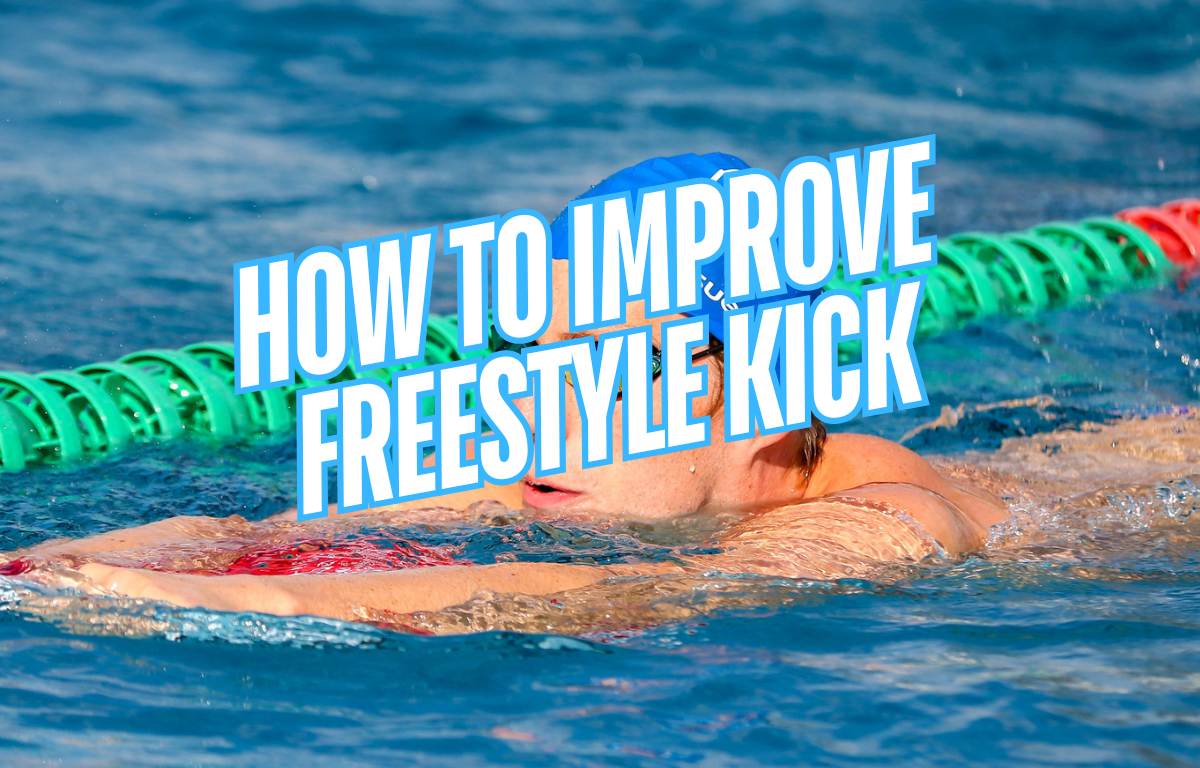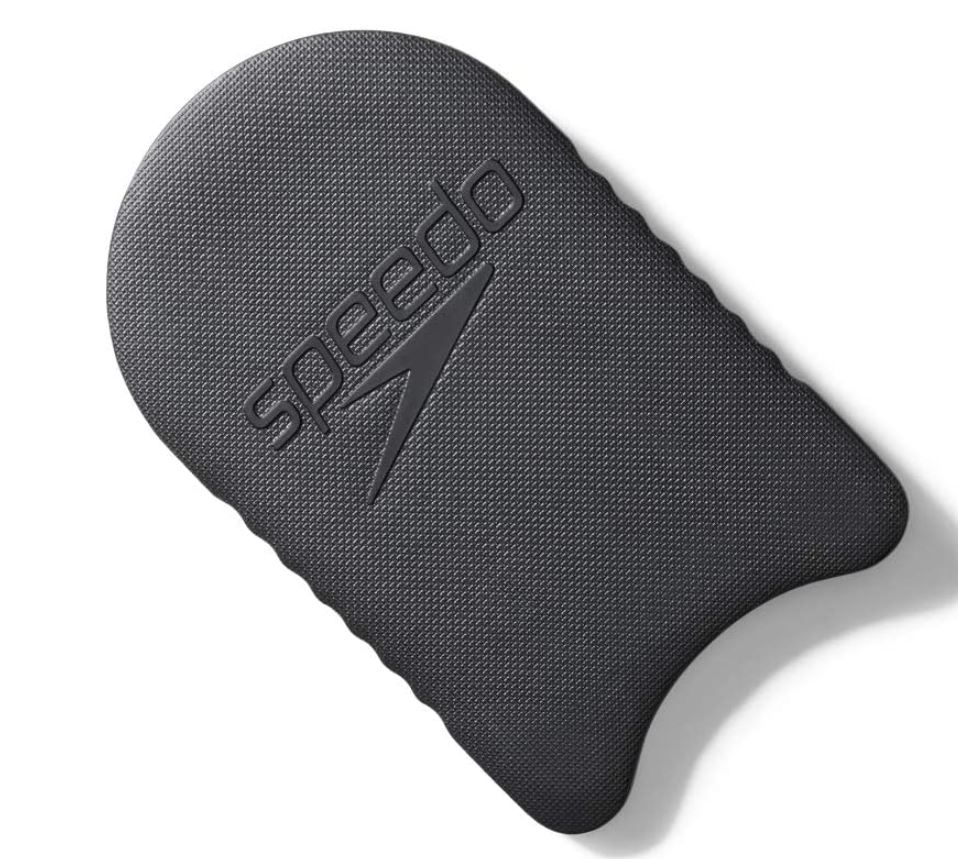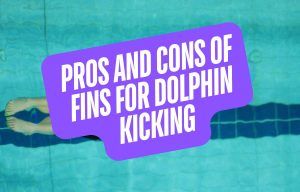The top athletes in the pool are not only fast swimmers, they are fast kickers. Here is your guide to a faster freestyle kick.
The fastest freestylers on the planet always have an unbelievable kick.
Alexander Popov, two-time Olympic champion in both the 50m and 100m freestyles, could kick a 50m long course in 27 seconds. Cesar Cielo, world record holder in the 50 and 100m freestyle, kicked the same length in 30 seconds.
Other top sprinters, including Americans Nathan Adrian and Jimmy Feigen, have made it clear that to swim fast, you need to put in work on your legs.
Even if you are not a sprint swimmer, athletes like Katie Ledecky are showing that you need to have some serious wheels in the lower body to compete at an elite level.
Despite this, it seems many swimmers (and even coaches) don’t emphasize lower body work in the pool. Sure, a bunch of kick sets might get scrawled up at the beginning of the season for aerobic work, but this typically tapers off as the season unwinds.
Your legs, being those big trunks of muscle that they are, need to be in hilarious shape in order to develop the type of propulsion and stability necessary for high-speed swimming.
Here’s your guide to developing a legendary freestyle kick.
Why You Should Be Working on Your Freestyle Kick
Doing kick goes beyond just giving your shoulders a break (although that is a solid reason in itself).
And it’s easy to understand why we ignore our legs– they are working down below on their own while we are paying attention to what is happening right in front of us with our arms and hands.
But having a solid flutter kick will help you become a better swimmer overall.
Including:
- Faster swimming. The immediate goal of developing a faster flutter kick is as fundamental as wanting to go faster. The kick makes up approximately 30% of the force in all-out, tethered swimming (Morouco et al., 2015). The faster you can kick, the faster you can swim.
- A strong kick gives you a killer body position in the water. Beyond propulsion, kicking—particularly for sprinters—helps the speed-seeking swimmer maintain a high body position in the water. While we are still far away from sprint swimmers completely hydro-planing across the water, that is the goal.
- A strong kick launches you into your arm pull. Strong legs and a strong kick add power to your hip rotation. This, in turn, helps you drive your arms forward for a faster and more dynamic arm pull. Your freestyle stroke benefits from having more power from the core and your kick.
- A strong kick keeps your stroke together. Strong legs come in handy towards the end of races, where your muscles are failing left and right, with your stroke disintegrating with each passing meter. Having endurance in your lower body is essential to keeping your body position in the most efficient and powerful position possible.
How to Improve Your Freestyle Kick
Tips for improving your freestyle kick include:
- Improve ankle strength
- Balance out the kick
- Kick backward, not down
- Improve ankle flexibility
- Vertical kicking
- Resisted kicking
- Kick mindfully
- Kick more
Next, we will examine each tip in more detail, review research on the impact of different kick-improvement strategies, offer some kick sets to help you get going, and recommend our favorite essential swim gear for a stronger and faster kick.
1. Improve ankle strength.
Swimmers can be forgiven for having ankles that aren’t the most stable. We spend a majority of our time training in water, with horizontal push-offs the only real shock to our little feet.
Swimmers can build ankle strength by incorporating skipping into their warm-up/mobility/dryland plan.
Skipping rope is not only a low-impact way to develop strength quickly in your ankles and calves, but it will also develop overall athleticism and help you be lighter on your feet, which comes in handy for developing quicker turns and starts.
2. Balance out your kick.
For most swimmers, there is a near-total focus on the downbeat portion of the kick, with the upbeat motion acting as a recovery movement.
The downbeat is where most of the propulsion happens (Andersen & Sanders, 2018), but the upbeat allows swimmers to develop a more rounded and powerful freestyle kick.
By developing the upbeat, swimmers gain a more stable foundation to exert power through the upper body, develop more power, and increase overall kicking speed.
“Fast swimmers are fast kickers.” – David Marsh, 7-time NCAA champion, 4-time Olympic coach for Team USA
Ways to improve the upbeat of the flutter kick include using swim fins to increase sensory awareness of this phase (kick slowly through the upbeat, catching more water and “feeling” the movement), using resistance like DragSox, and one of my favorites, vertical kicking.
Ultimately, improving the upbeat phase to build a more rounded freestyle kick starts with kicking through both phases with equal focus and power.
3. Kick backward, not down.
One of the important characteristics of a fast kick is rethinking the way the lower body generates propulsion. Swimmers tend to kick down. Instead, focus on pushing water backward with the top of your feet.
Just like how with our pull we strive to have an early vertical forearm so that we are pulling our bodies forward through the water by pulling backward, with our feet, we want to be kicking the water backward, and not just downwards.
Kicking up and down creates a lot of wasted effort and also tends to create a larger drag profile with the legs as the ankles and knees extend fully down instead of a motion designed to move water behind the swimmer.
4. Improve ankle flexibility.
Having flexible ankles means that you can catch more water with your foot, and achieve an EVA (early vertical ankle) that will allow you to push more water backward.
A study published in the Journal of Strength Conditioning Research confirms the importance of flexible ankles for faster kicking (McCullough et al., 2009).
A group of ten NCAA Division 1 swimmers performed 50m swim and 22.86m kick time trials and had height, leg length, foot length, and ankle flexibility measured.
The big takeaway?
Ankle flexibility, more specifically, ankle plantar flexion, was significantly correlated to kicking and swimming speed. Interestingly, anthropometric characteristics or even vertical jump power were not linked to faster kick or swim velocities.
For swimmers with limited mobility in their ankles, this will require some mobilization work.
Here are two quick fixes for low-mobility ankles:
- Ankle rockers. A simple stretch you can add to your pre-and post-workout dryland work. Sit on the back of your ankles. Lean back, lifting your knees off the ground. You’ll feel the stretch pretty quickly in the top of your feet. Hold for 1-2 minutes. Repeat a couple times.
- Ankle rotations. As a swimmer, you’ve mastered a wide variety of arm swings. You can do the same with your ankles, doing 15-20 foot rotations in each direction. The best part is that you can do it while sitting on the couch.
5. Vertical kicking
Vertical kicking is a drill where swimmers get into an upright (vertical) position and kick. The vertical body position forces swimmers to kick more intensely to stay afloat.
Vertical kicking is an excellent way to develop a more powerful kick, work both phases of the flutter kick motion, engage the core, and reduce shoulder stress from kicking endlessly on a kickboard.
A small study with a group of competitive swimmers found that the benefits of a vertical kicking protocol focused on steady progression can yield faster and more efficient kicking (Mandzak et al., 2020).
The intervention group performed bonus vertical kicking sets several times per week for a five-month period. By the end of the intervention, swimmers were doing rounds of 30 seconds work, 30 seconds rest holding a medicine ball out of the water.
50m kick time trial performance improved for the intervention group by 3.23% compared to the control group, who also improved, but not as substantially (2.64%).
The vertical kicking swimmers also used fewer kicks to cover the same distance, developing kick speed and efficiency.
Start with 5-8 rounds of 30s work, 30s rest with your arms at your side.
As your legs get stronger, progress to raising hands out of the water, adding resistance (DragSox are awesome for vertical kicking), and power up your freestyle kick.
6. Resisted kicking
Resisted kicking helps strengthen the leg muscles crucial for generating a powerful, high-propulsion kick, including the quadriceps, hamstrings, and calves.
Adding resistance, either with DragSox, a swim parachute, resistance tubing, or a power tower, swimmers are forced to work harder to maintain technique and overcome the resistance.
A study with elite Japanese swimmers (Sengoku et al., 2020) found that a four-month intervention with resisted kicking yielded significant improvements in underwater dolphin kick velocity.
No different for building a more powerful freestyle kick.
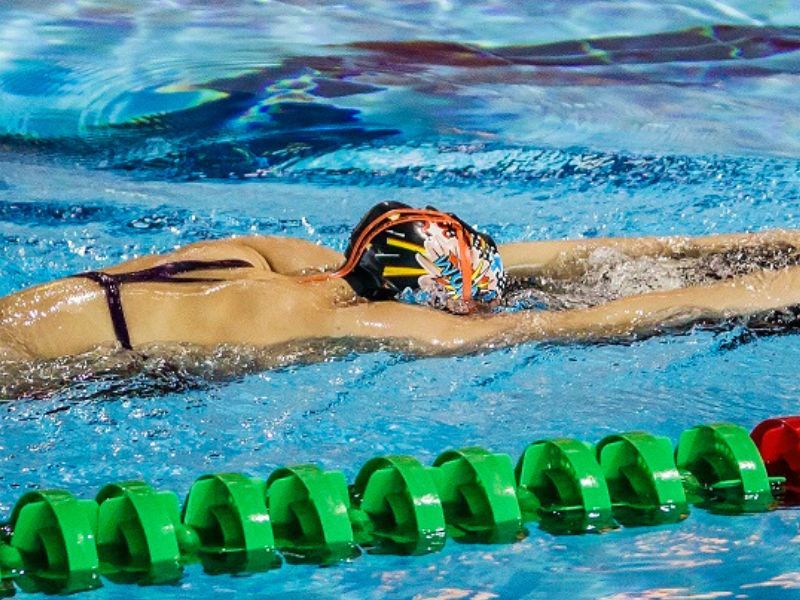
The trick with resisted kicking is to keep the efforts short, use lots of resistance, and take plenty of rest to keep power output at a high level.
One of my favorite ways to use resisted kicking is in contrast sets, where you alternate short-burst resisted kicking with “regular” all-out kicking.
This ends up looking something like this:
Five rounds–
- 4×10 seconds freestyle kick all-out using a swim tether or resistance tubing – 50 seconds rest after each repetition
- 50m freestyle kick with a kickboard, all-out on a 2:00 interval
Another of my favorite kick sets is using resisted, regular, and overspeed kicking, giving swimmers all sorts of enhanced awareness to draw feedback and improvement.
Example:
24×25 freestyle kick on a 60-second interval. All of them fast.
- 8 – with light DragSox and kickboard (resisted)
- 8 – with kickboard (regular)
- 8 – with fins and kickboard (overspeed)
Resisted kicking activates more muscle fibers than regular kicking, giving you an added jolt of speed and power when you remove the resistance.
7. Kick Mindfully.
When doing kick sets you should be mindful of the movements of your legs, of driving from your hips, of cracking your ankles like a whip.
Mindless kicking is fun for aerobic endurance, I suppose, but you want to be efficient as well, and this comes by being mindful of your kicking technique.
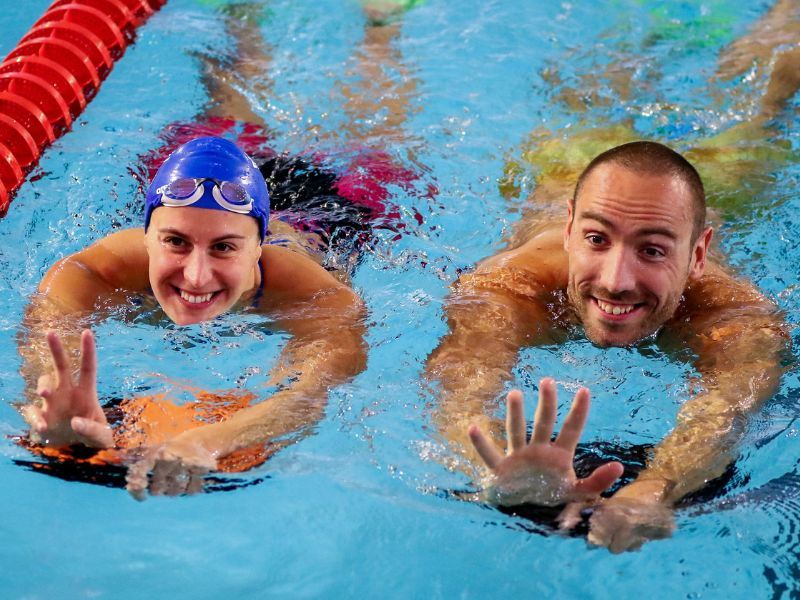
All too often at the pool, I watch swimmers pay careful attention to the placement of their hands in the catch and pull, but when it comes to kicking, they thrash their legs back and forth with little thought to what they are doing.
Kick with intent. Kick mindfully, whether you are on a kickboard or swimming.
8. Kick more. A lot more.
There is no substitute for doing more kick in practice. There is no secret dryland exercise or magical technical adjustment that will replace simply doing more kick during your workouts.
For a moment, consider how much kick you are actually doing in your workouts. (And no, dragging your legs around doing a 1-beat kick doesn’t count.)
Add in an extra 15-20 minutes of varied work on the kickboard. If short on pool space crank out some vertical kicking. Do high-intensity kicking and long, low-intensity kicking.
Once your freestyle kick starts to improve you will want to do it more. (Ain’t that always the case—soon as you start to master something you want to do more of it?)
Keep it fresh, keep it fun, keep it challenging, and flutter kick your way to faster swimming.
What equipment should I use for a stronger freestyle kick?
There are lots of different types of swimming equipment you can use to improve kicking technique, strength, and speed. The best ones include a kickboard, swim training fins, and DragSox, a specialized resistance tool for swimmers.
Kickboard.
The kickboard is a classic form of swim gear that helps swimmers improve kicking by isolating the lower body and giving the upper body buoyancy.
Kickboards come in a variety of shapes and materials. Look for a kickboard made with high-density EVA foam that is comfortable for extended use when doing kicking sets in the pool.
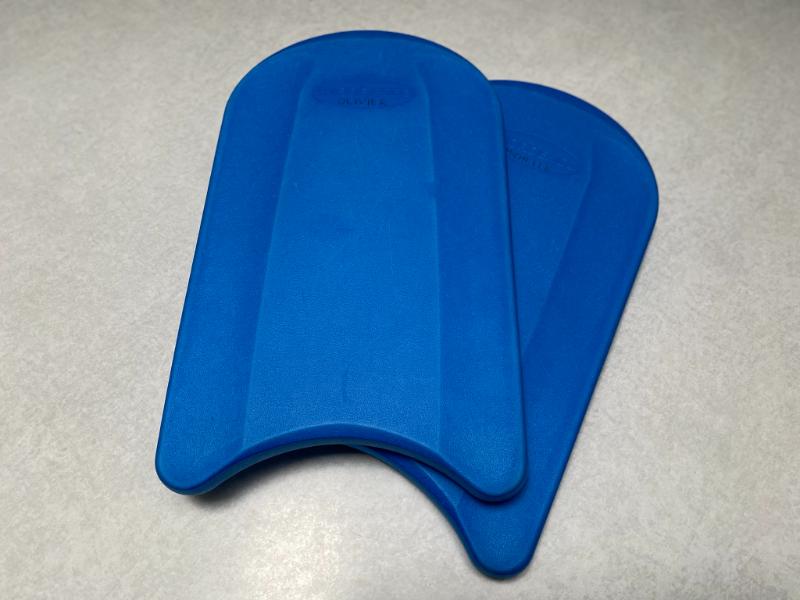
The Speedo Team Kickboard is the best all-around kickboard for swimmers.
It has an ergonomic bottom that “locks” against the sternum, is available in a ton of colors, and is made of wildly durable high-density EVA foam that won’t crack and fall apart after all of your long kick sets and workouts at the pool.
Swim training fins
Fins made for swimmers tend to have a shorter blade and are made of soft silicone or rubber for comfort.
Swim fins provide added buoyancy and help swimmers really “feel” each part of the kicking motion. Swim training fins are also an excellent option for developing kick strength.
There are several different swim fins that I recommend for developing and experienced swimmers. A medium or long-blade fin suits beginner swimmers, while short-blade swimmers are best for mimicking the natural kick tempo of regular swimming and kicking.
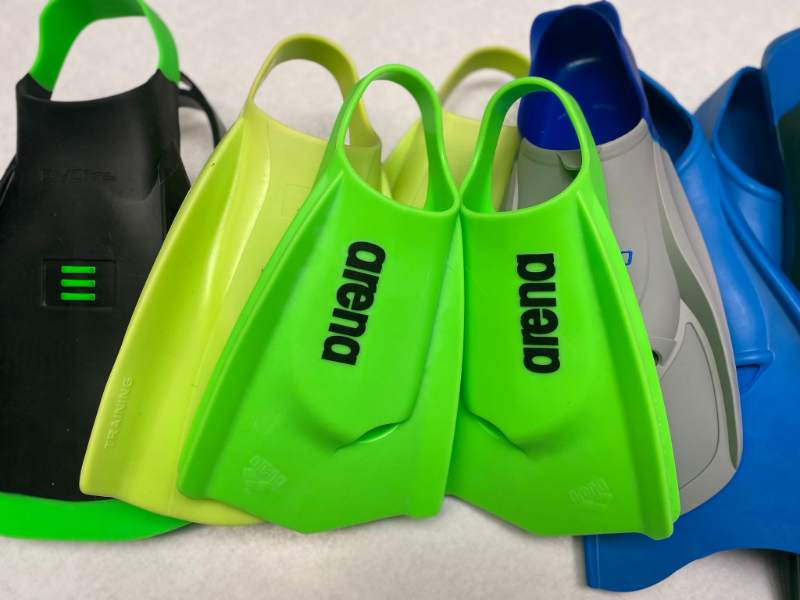
The Arena Powerfins Pro are the best training fins for developing a powerful freestyle kick in training.
They are made of soft silicone, which doesn’t chafe or blister, uses rails along the side of the fins to control water direction when kicking, and the open heel design promotes a natural range of movement when freestyle kicking.
DragSox
DragSox are a unique and awesome tool for improving kick (and swimming) speed.
They are mesh nets designed to be worn on the feet, increasing resistance and strengthening the kick.
DragSox are superior to other resistance equipment for swimmers like parachutes and towers as there are no straps or cables that tangle swimmer’s feet.
DragSox can also be used for my favorite kicking drill, vertical kicking.
Wrapping Things Up
Ultimately, when it comes to mastering the freestyle kick, swimmers should focus on ankle flexibility and strength, building power through resisted kicking, and kicking with proper technique.
Not only will you start to motor along the pool faster when using a kickboard, but you will also find that your swimming speed increases, you finish races stronger, and you can use your freestyle kick as a weapon to storm past the competition (and your PB’s).
Give the freestyle kick tips above a try this week at the pool, get your kick on, and happy (and fast) swimming!
More Kick Guides and Articles:
How to Improve Your Kick with Mesa Aquatic Club. Paul Smith, owner and head coach with MAC, shares a couple of sets, as well as a video demonstration of the “Pushback” kick drill.
40 Epic Workouts for Competitive Swimmers. Looking to inject some new ideas into your training? Here are 36 workouts from some of the top swimmers and programs in the world.

